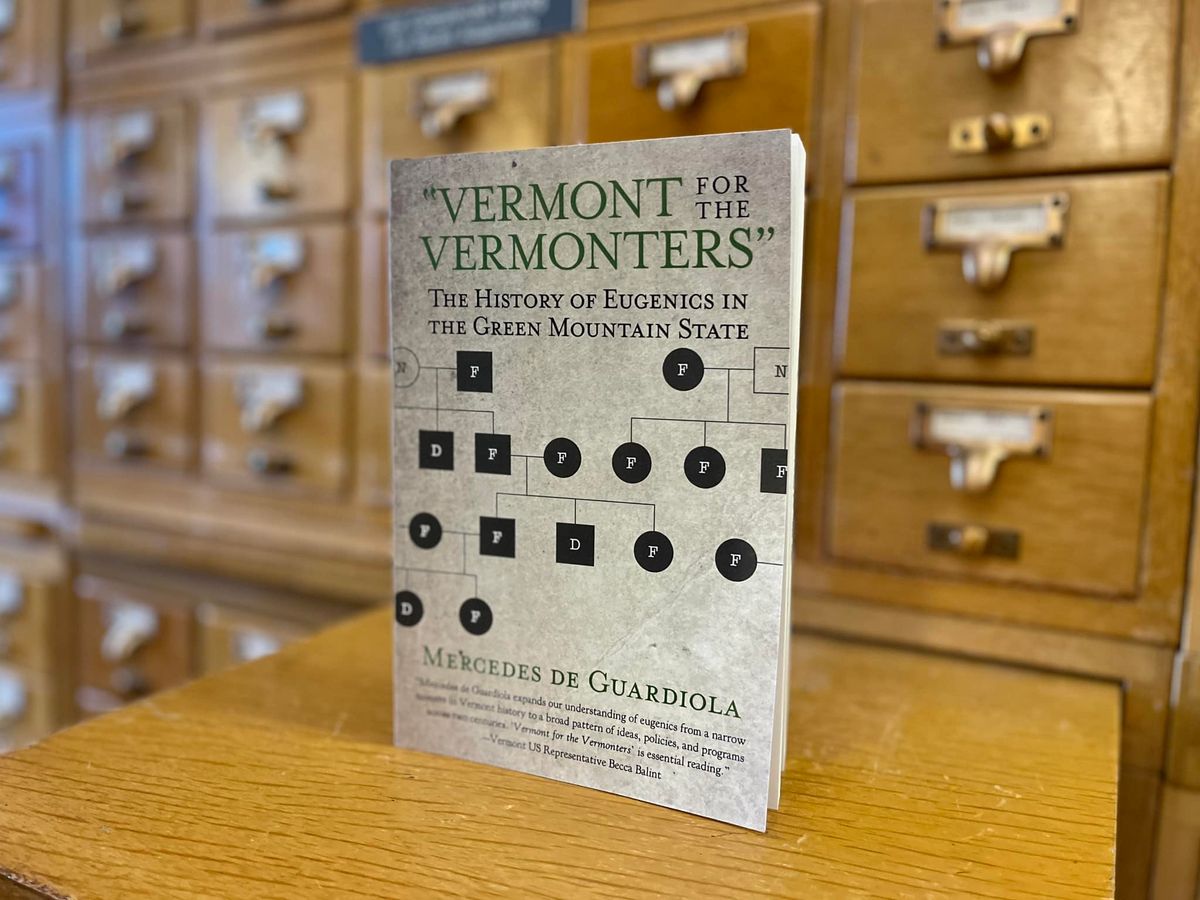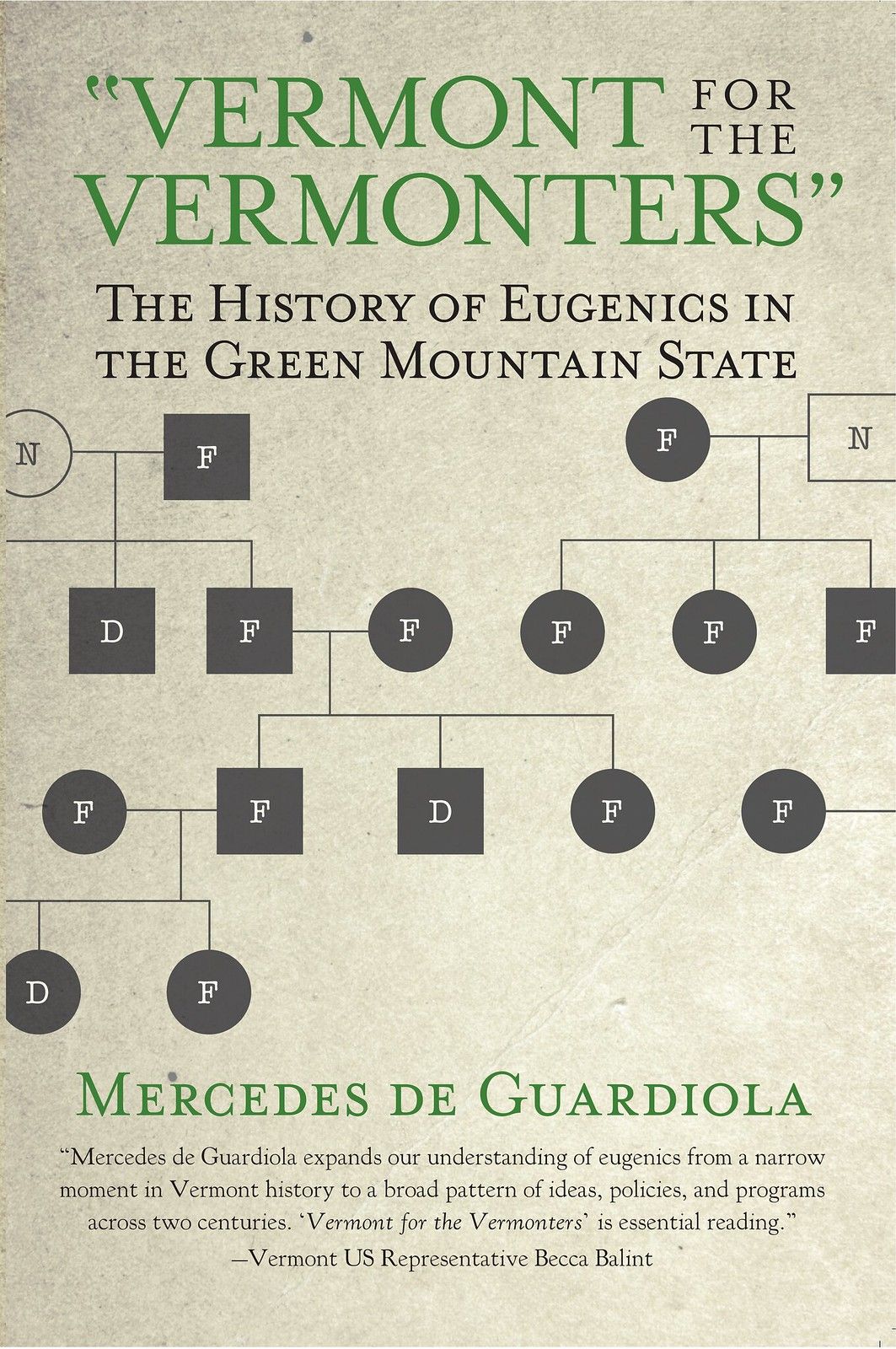Dark chapters
A Q&A with "Vermont for the Vermonters": The History of Eugenics in the Green Mountain State author Mercedes de Guardiola

One of the projects that I've been working on for the day job at the Vermont Historical Society is being PR goblin for a book that we're releasing this month: "Vermont for the Vermonters": The History of Eugenics in the Green Mountain State by Mercedes de Guardiola. I sat down and gave it a formal read through the other day while on a long road trip, and while I'm certainly biased (it is a book that I'm shilling for), it's a solid history.
I'm of the mind that history should be somewhat unsettling. Eugenics is a horrifying concept that I really wasn't aware of throughout my time in school, and reading about the things that the state government, its elected officials, and its citizens did to one another left me horrified. It was a period of profound lack of empathy for those who needed the help to simply exist.
What troubles me the most about this history is that there are so many parallels from the 1920s that are still here in the 2020s. Policies for how we deal with mental health in this state (and country), reproductive freedoms, gender, religious, and economic differences. It feels at times like it wouldn't take much to slide backward to this bleak point in time.
We announced the book at work a while ago, and I conducted a short interview with Mercedes about how the book came about and what the process was like from its early forms to finished product. You can visit her website here.
If you'd like to join the VHS mailing list, you can do that here, and if you'd like to preorder a copy of the book, you can do so from the VHS store here.

First off, can you introduce yourself to our readers?
I'm a historian of eugenics with a current focus on Vermont's history of the movement, particularly policies of child health and welfare, mass institutionalization and deinstitutionalization, sterilization, and family separation. I first began my research at Dartmouth College and have continued my research since—it's been about seven years, so pretty exciting to finally see it published!
I first shared a portion of my work in Vermont History, but felt very strongly readers would benefit more from seeing the contextualized history standalone book rather than a series of articles. Currently, I'm based in New York and work in open innovation consulting across subjects such as Lyme disease diagnostics, suicide prevention, and adult education technology.
When did you first learn about Vermont’s eugenics movement, and what motivated you to pursue the topic at Dartmouth?
The history of eugenics has always been a point of interest to me, even before I became aware of the name—it's really not a term that's well-known in America. Understanding eugenics is key to understanding so many parts of our history, from the development of healthcare to public welfare, as well as what we're seeing today with communities' distrust in the medical system and the lack of long-term mental health treatment.
At Dartmouth, I was taking a seminar on American history and had been planning to write a senior thesis on Nazi Germany. My teacher suggested I look at American eugenics, which was the basis of Nazi policies; it was the first time I'd ever heard what the field was called. Vermont was proposed because the records were available—that's not the case in many states, and later it became apparent that some critical records here are still inaccessible—and it appeared that there were gaps in the public understanding of that history.
How did you come to publish your article with Vermont History, “Segregation or Sterilization”: Eugenics in the 1912 Vermont State Legislative Session” and how did that lead to you testifying before the Vermont state legislature?
Following several talks my senior year and a significant public interest in the subject, the editor of Vermont History, Michael Sherman, invited me to submit my research for publication. Choosing the selection was difficult: It's a lengthy history and much of it is difficult to tackle within the confines of an article, but the 1912 campaign under Governor Mead offered an opportunity to open new discourse on the state's history of eugenics.
As one of the few historians on the topic, the state legislature afterwards asked me to testify on this history and the wide range of public policies that resulted. Today, much of the public understanding of Vermont eugenics is limited to the 1931 sterilization law; in my testimony, I laid out the expansive policies put into place and the legislature's role in supporting or enabling them at the time.
How did you decide to publish this as a standalone book?
One of the major problems in understanding the United States's history of eugenics is the lack of research and available information. Though there is significant and growing interest in the subject, these issues have led to a great deal of misreporting and misunderstanding of what occurred. My goal in publishing a standalone book was to help readers understand the broad history of eugenics—including why it developed with such strong support and the impact we can see today.
What does “Vermont for the Vermonters” bring to our understanding of the movement? What new things did you learn while researching it?
“Vermont for the Vermonters” regrounds the history of eugenics into the state's larger history. When I first started my work, two questions stood out to me: Why did eugenics emerge in Vermont, and why did so many Vermonters believe that eugenics was a necessary, humane solution to social issues?
The short answer is personal conviction, but in limiting ourselves to that we lose sight of the bigger picture that led to personal conviction. In looking further back, I was able to see how failing systems of healthcare and public welfare, coupled with preexisting beliefs on human worth, exploded into support for eugenics. Looking at the contextualized history demonstrates the patterns of issues that can lead to eugenics—regardless of time or place—while Vermont's unique development of eugenics demonstrates how eugenicists thought, as well as the often illogical nature of the movement.
What do you hope Vermonters and readers will take away from “Vermont for the Vermonters” after reading it?
Why Vermont eugenics happened. That's the question I get asked most of all, whether it's from survivors and their families or people who have only just heard of it. "Vermont for the Vermonters" is a look at how social elites in positions of authority—from those at the heights of legislature and academia to officers in small towns—actively sought to rid their world of people they decided were their inferiors on the basis of socioeconomic status, race and ethnicity, and ability, and built a social construct of the "superior" human race to do so. It's not an easy part of our history in America, but history shouldn't always be easy. It's also my hope that this book will spur further research—there's still much of the history we don't know, particularly regarding the extent to which private organizations carried out eugenics.